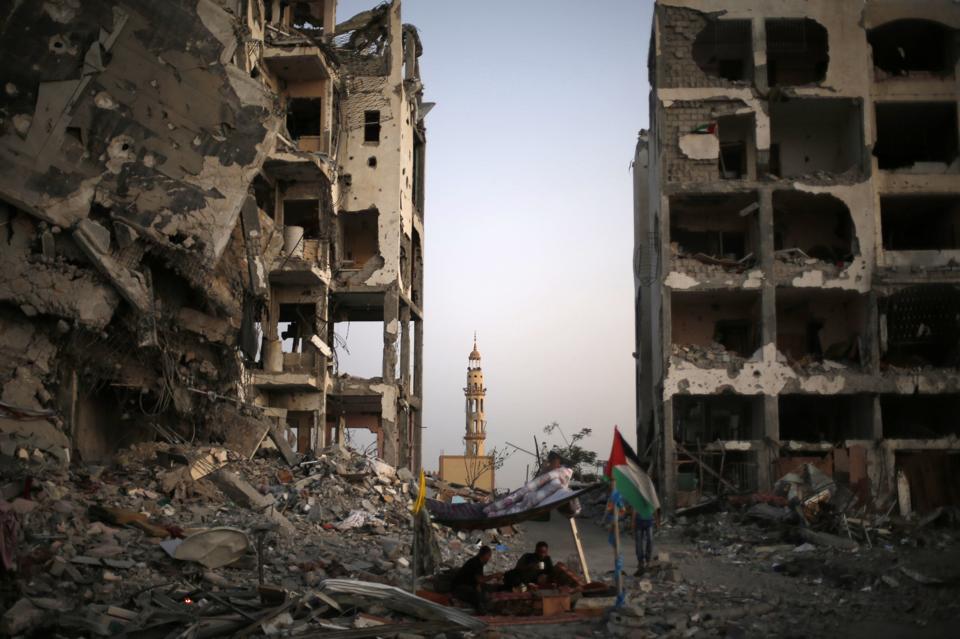Through eight years of military blockade and three successive wars in 2008, 2012, and 2014, Israel has destroyed and degraded the Gazan infrastructure and economy. Unemployment in the Gaza strip is at 44 percent. Six in 10 households suffer from food insecurity.
Since 2007 exports from Gaza are banned and imports and transfers of cash are severely limited. Flow of all but the most basic humanitarian goods has been suspended. Per capita GDP in Gaza is 74% of what it was prior to the Oslo accords. The report indicates a real GDP per capita in constant 2004 dollars of ~$1,000--about $2.70/day.
Among young women the unemployment rate is 80%. The ramifications of persistently high unemployment will be devastating in the long term, says the report, as training and education among the long term unemployed become obsolete.
The latest military operation in 2014 has destroyed virtually all of what was left of the middle class in Gaza, says the report, relegating "almost all of the population into destitution and dependance on international humanitarian aid."

- 18,000 housing units destroyed or badly damaged
- 26 schools destroyed and 226 damaged
- 17 hospitals and 56 primary health centers damaged
- Gaza's sole power plant severely affected by damage, lack of fuel, and extensive damage to power lines
- 20-30% of the water and sewage network damaged
- Water de-salination plant in Deir al-Balah damaged
- 220 agricultural wells destroyed or badly damaged
- 40,000 agricultural workers affected by damage to land and destruction of livestock
- 247 factories and 300 commercial establishments destroyed or badly damaged
Gaza faces a severe water crisis. It relies almost completely on a coastal aquifer as the source of its drinking water, but 95% of this water is not potable without treatment. Years of over-extraction have left the aquifer on the verge of collapse, threatening its long-term viability. Groundwater levels have declined and seawater has rushed in, increasing salinity and making the water not safe for drinking according to WHO standards. The aquifer may become unusable as early as 2016.
Destruction of sewage facilities has made matters worse. About 33 million cubic meters of untreated or inadequately treated sewage are dumped into the Mediterranean every year.
The electricity demand of the strip cannot be met. Only a fraction of needed electricity is available.
The development of gas fields discovered within Gaza's waters could help a lot, but Israel's occupation does not permit these fields to be developed.
As of now, Gaza lacks the resources and support to reconstruct the damage, it lacks the ability to develop its economy. The situation is bleak.




Comment: Gaza will be uninhabitable in less than 5 years - UN report